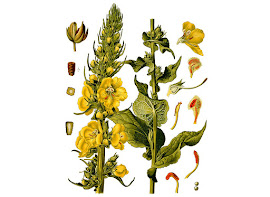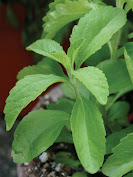When I read articles about herbs and their healing powers, I come across certain terms used with herbs that concerns exactly what they do and how they can help the body. But, like many, I get confused....yes me, an experienced herbalist. I don't even usually refer to the these terms, I just know which herb to use most times....but there are times when I have to do my research too. So here's a list of these terms which most, if not all, of us use!! Lengthy, but very informative!!
*Alterative -- gradually restores proper function of the body. Increases health & vitality.
*Analgesic/Anodyne -- reduces pain, applied topically or taken internally.
*Anti-Catarrhal -- helps body remove excess catarrh (mucus), whether in the sinus or the body.
*Anti-Emetic -- reduces nausea, helps prevent or relieve vomiting.
*Anti-Inflammatory -- helps the body to combat inflammation.
*Anti-Lithic -- prevents formation of stones or gravel in the urinary system, can help the body in their removal.
*Anti-Microbial -- helps the body to destroy or resist patho-genic micro-organisms.
*Anti-Spasmodic -- eases spasms or cramps.
*Astringent -- contains tannins & can reduce secretions & discharges.
*Bitter -- a stimulating tonic for the digestive system.
*Cardiac -- tonics that affect the heart.
*Carminative -- rich in volatile oils. Stimulates the peristalsis action of the digestion system & relaxes the stomach. Supports digestion & helps against gas.
*Cholagogue -- stimulates the release & secretion of bile from the gall bladder which can be a great benefit in gall bladder issues. Also has a laxative effect on the digestive system as they increase amounts of bile in the duodenum. bile is our internally produced, all-natural laxative.
*Demulcent -- rich in mucilage so they can soothe & protect irritate or inflamed internal tissue.
*Diaphoretic -- aids the skin in elimination of toxins & promotes perspiration.
*Diuretic -- increases the secretion & elimination of urine.
*Emollient -- applied to skin to soften, soothe or to protect it.
*Expectorant -- supports the body in removal of excess amounts of mucus from the respiratory system.
*Febrifuge (Anti-Pyretic) -- helps the body bring down fevers.
*Galactagogue -- helps breast feeding mothers. Increases milk flow.
*Hepatic -- aids the liver. Their use tones & strengthens it & increases the flow of bile.
*Hypnotic -- induces sleep....not a hypnotic trance.
*Laxative -- promotes evacuation of the bowels.
*Mucolytic -- a substance that dissolves mucous or breaks down mucous. Used to treat chest conditions involving excessive or thickened mucous secretions.
*Nervine -- beneficial effect on the nervous system. Tones & strengthens it. Some act as stimulants, some as relaxants.
*Oxytocic -- helps in childbirth by stimulating the contraction of the uterus.
*Pectoral -- general strengthening & healing effect on the respiratory system.
*Rubefacient -- stimulates the dialation of the capillaries, thus increasing circulation of the skin. The blood is drawn from deeper parts of the body into the skin & thus often internal pains are relieved.
*Sedative -- calms the nervous system, reduces stress & nervousness throughout the body.
*Sialagogue -- stimulates the secretion of saliva from the salivary glands.
*Stimulant -- quickens & enlivens the physiological functions of the body.
*Styptic -- reduces or stops external bleeding.
*Tonics -- strengthens & enlivens either specific organs or the whole body. There are tonics for every system of the body.
*Vulnerary -- applied externally & aids the body in the healing of wounds & cuts.
Now one wouldn't think herbs could do this much, but lo & behold, they can & do!!! One just needs an experienced herbalist to know what to do!!
















